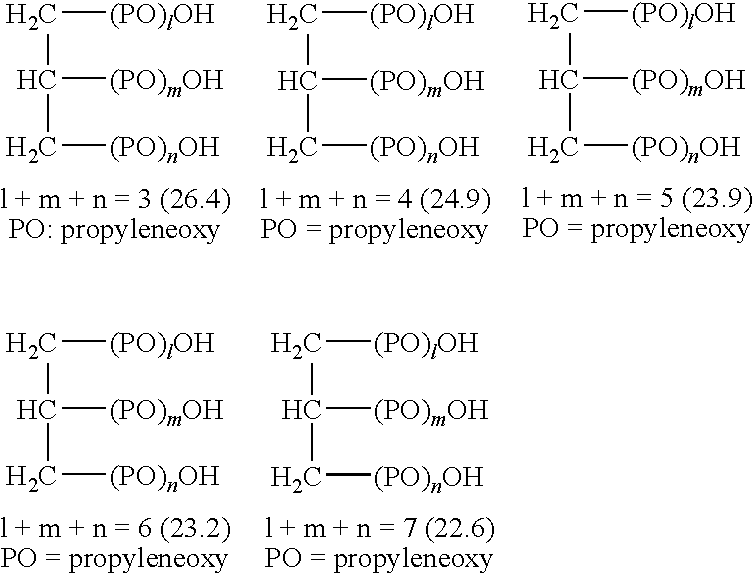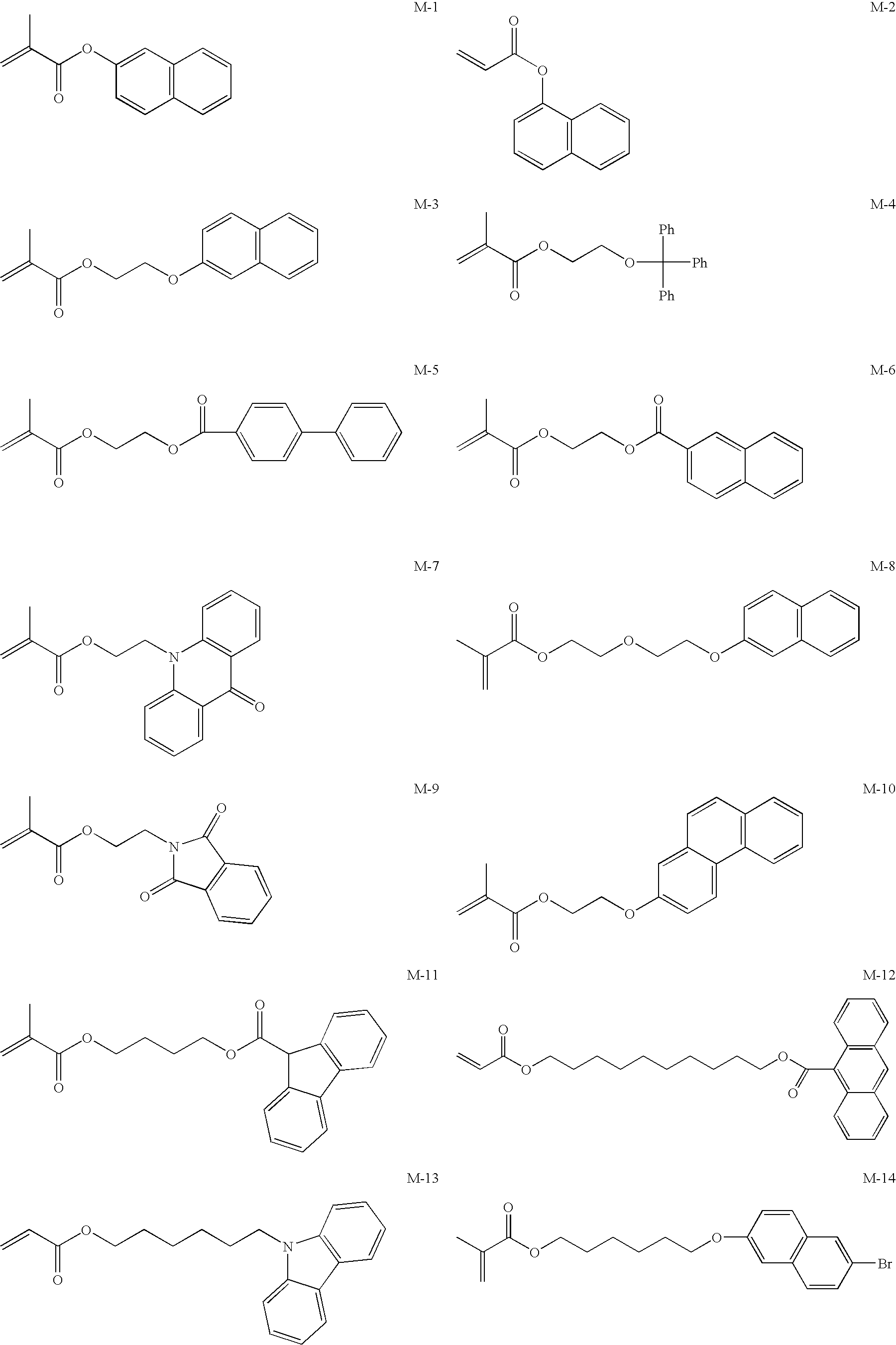[0044]A solvent which is different from the non-volatile water-soluble organic solvent may be further employed as long as the effect of the invention is not impaired thereby.
[0045]Examples of a water-soluble organic solvent which can be additionally used as such other solvent include polyhydric alcohols including glycerin, 1,2,6-hexanetriol,
trimethylolpropane, and alkanediols such as ethyleneglycol, propyleneglycol, diethyleneglycol, triethyleneglycol, tetraethyleneglycol, pentaethyleneglycol, dipropyleneglycol, 2-
butene-1,4-
diol, 2-ethyl-1,3-hexanediol, 2-methyl-2,4-pentanediol, 1,2-octanediol, 1,2-hexanediol, 1,2-pentanediol, or 4-methyl-1,2-pentanediol; so-called
solid wetting agents including saccharides such as glucose,
mannose,
fructose,
ribose,
xylose,
arabinose,
galactose,
aldonic acid, glucitol,
maltose,
cellobiose,
lactose,
sucrose,
trehalose or
maltotriose;
sugar alcohols; hyaluronic acids; and ureas;
alkyl alcohols having 1 to 4 carbon atoms such as
ethanol,
methanol,
butanol,
propanol or isopropanol;
[0046]
glycol ethers such as ethyleneglycol
monomethyl ether, ethyleneglycol monoethyl
ether,
ethyleneglycol monobutyl ether, ethyleneglycol
monomethyl ether acetate, diethyleneglycol
monomethyl ether, diethyleneglycol monoethyl
ether, diethyleneglycol mono-n-
propyl ether, ethyleneglycol mono-iso-
propyl ether, diethyleneglycol mono-iso-
propyl ether, ethyleneglycol mono-n-butyl
ether, ethyleneglycol mono-t-butyl ether, diethyleneglycol mono-t-butyl ether, 1-methyl-1-methoxybutanol, propyleneglycol monomethyl ether, propyleneglycol monoethyl ether, propyleneglycol mono-t-butyl ether, propyleneglycol mono-n-propyl ether, propyleneglycol mono-iso-propyl ether, dipropyleneglycol monomethyl ether, dipropyleneglycol monoethyl ether, dipropyleneglycol mono-n-propyl ether or dipropyleneglycol mono-iso-propyl ether; 2-pyrrolidone, N-methyl 2-pyrrolidone, 1,3-dimethyl-2-
imidazolidinone,
formamide,
acetamide, dimethylsulfoxide, sorbit,
sorbitan, acetin, diacetin,
triacetin, and
sulfolane. One or more among these solvents may be employed as the other solvent.
[0047]A polyhydric
alcohol can be preferably employed as an anti-
drying agent and / or a
wetting agent. Examples of the polyhydric
alcohol include glycerin, ethyleneglycol, diethyleneglycol, triethyleneglycol, propyleneglycol, dipropyleneglycol, tripropyleneglycol, 1,3-
butanediol, 2,3-
butanediol, 1,4-
butanediol, 3-methyl-1,3-butanediol, 1,5-pentanediol, tetraethyleneglycol, 1,6-hexanediol, 2-methyl-2,4-pentanediol, polyethyleneglycol, 1,2,4-butanetriol, and 1,2,6-hexanetriol. One or more among these solvents may be employed as the other solvent.
[0048]A
polyol compound can be preferably employed as a penetrating agent. Examples of the
polyol compound include aliphatic diols such as 2-ethyl-2-methyl-1,3-
propanediol, 3,3-dimethyl-1,2-butanediol, 2,2-diethyl-1,3-
propanediol, 2-methyl-2-propyl-1,3-
propanediol, 2,4-dimethyl-2,4-pentanediol, 2,5-dimethyl-2,5-hexanediol, 5-
hexene-1,2-
diol, 2-ethyl-1,3-hexanediol, or 2,2,4-trimethyl-1,3-pentanediol. Among these compounds, 2-ethyl-1,3-hexanediol and 2,2,4-trimethyl-1,3-pentanediol are preferable. One or more among these solvents may be employed as the other solvent.
[0049]A content of the non-volatile organic solvent contained in the ink composition employed in the invention is preferably in a range of 5
mass % to 30
mass %, and more preferably 5 mass % to 25 mass %, with respect to the total amount of the ink composition. When the content of the non-volatile water-soluble organic solvent in the water-soluble organic solvent is 5 mass % or more, the re-dispersibility of
solid substance derived from the ink composition can be more favorable. When the content is adjusted to 30 mass % or lower, the stability of the ink composition can be further increased.
 Login to View More
Login to View More 


